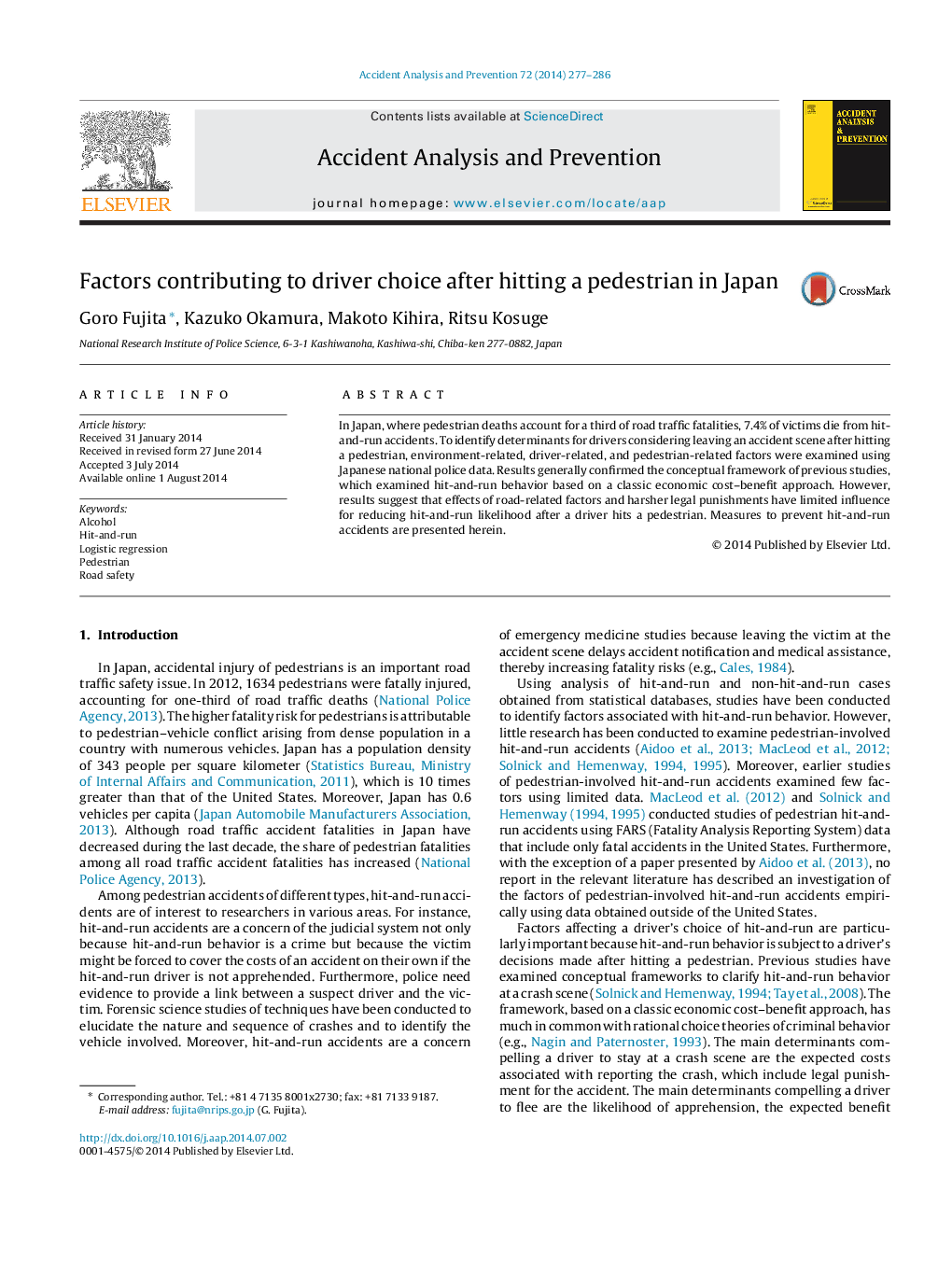| Article ID | Journal | Published Year | Pages | File Type |
|---|---|---|---|---|
| 572272 | Accident Analysis & Prevention | 2014 | 10 Pages |
•Pedestrian hit-and-run accidents were examined using a Japanese national database.•Logistic regression models were constructed, identifying 16 factors.•Results show a cost–benefit approach as useful to assess hit-and-run behavior.•Road-related measures and punishment against hit-and-run have limited effects.•Measures to increase the perceived risk of discovery are effective.
In Japan, where pedestrian deaths account for a third of road traffic fatalities, 7.4% of victims die from hit-and-run accidents. To identify determinants for drivers considering leaving an accident scene after hitting a pedestrian, environment-related, driver-related, and pedestrian-related factors were examined using Japanese national police data. Results generally confirmed the conceptual framework of previous studies, which examined hit-and-run behavior based on a classic economic cost–benefit approach. However, results suggest that effects of road-related factors and harsher legal punishments have limited influence for reducing hit-and-run likelihood after a driver hits a pedestrian. Measures to prevent hit-and-run accidents are presented herein.
